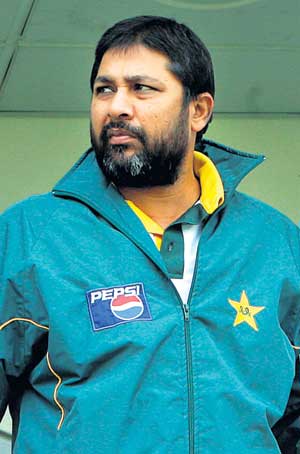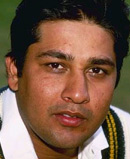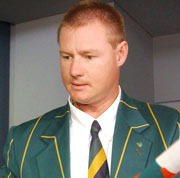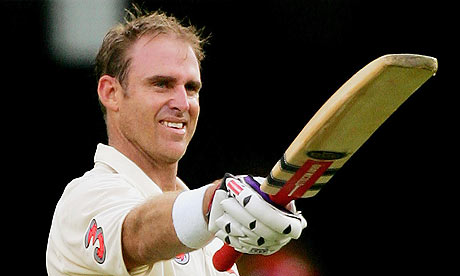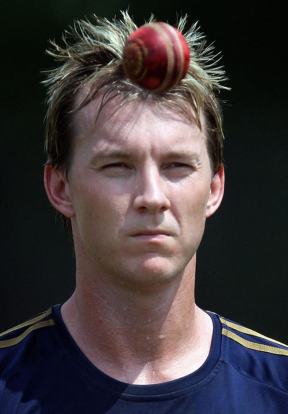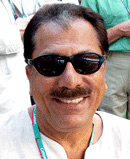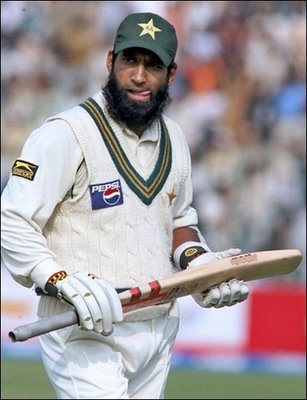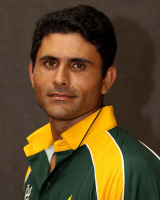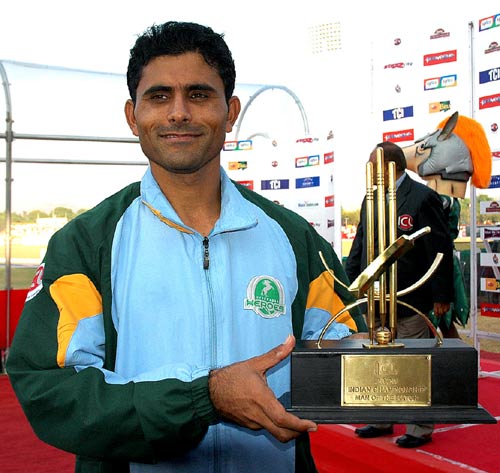Inzamam-Ul-Haq Biography
Inzamam-ul-Haq (born 3 March 1970) is a Pakistani cricketer. He is considered to be one of Pakistan’s best batsmen.He is currently the captain of the Pakistani team.Test Debut: Pakistan v England at Birmingham, 1st Test, 1992. His career highlights are:
Scoring 60 in 37 balls against New Zealand in the semifinal of the 1992 World Cup to win the match that was nearly lost.
Scoring 329 against New Zealand in Lahore during a Test in the 2001-02 season (the twelfth highest score by a batsman)
Scoring 138* to deny Bangladesh victory at Multan.
Becoming the second batsman to score 10,000 runs in one-day inernationals (behind Sachin Tendulkar)
Scoring 184 in his 100th Test, against India at Bangalore in 2005.
Inzamam ul-Haq is well-known for his poor running between the wickets (as of May 2005, he has been run out a record 38 times in one-day internationals) and his ability to play shots around the ground. He has been described as looking “like a passenger in the field”.
He averages just over 50 runs per innings in tests and nearly 40 runs in one-day internationals with a strike rate of 53.65 and 74.20 respectively (figures current as of May 2004). He is called the best batsmen in the world against pace by Imran Khan. Inzamam is a giant that has a very soft touch for a man of his bulk. He usually bats at number three with his sidekick Yousuf Youhana.
He plays shots all round the wicket, is especially strong off his legs, and unleashes ferocious pulls and lofted drives.
Inzamam-ul-Haq (born 3 March 1970) is a Pakistani cricketer. He is considered to be one of Pakistan’s best batsmen.He is currently the captain of the Pakistani team.Test Debut: Pakistan v England at Birmingham, 1st Test, 1992. His career highlights are:
Scoring 60 in 37 balls against New Zealand in the semifinal of the 1992 World Cup to win the match that was nearly lost.
Scoring 329 against New Zealand in Lahore during a Test in the 2001-02 season (the twelfth highest score by a batsman)
Scoring 138* to deny Bangladesh victory at Multan.
Becoming the second batsman to score 10,000 runs in one-day inernationals (behind Sachin Tendulkar)
Scoring 184 in his 100th Test, against India at Bangalore in 2005.
Inzamam ul-Haq is well-known for his poor running between the wickets (as of May 2005, he has been run out a record 38 times in one-day internationals) and his ability to play shots around the ground. He has been described as looking “like a passenger in the field”.
He averages just over 50 runs per innings in tests and nearly 40 runs in one-day internationals with a strike rate of 53.65 and 74.20 respectively (figures current as of May 2004). He is called the best batsmen in the world against pace by Imran Khan. Inzamam is a giant that has a very soft touch for a man of his bulk. He usually bats at number three with his sidekick Yousuf Youhana.
He plays shots all round the wicket, is especially strong off his legs, and unleashes ferocious pulls and lofted drives.
Inzamam-Ul-Haq
Inzamam-Ul-Haq
Inzamam-Ul-Haq
Inzamam-Ul-Haq
Inzamam-Ul-Haq
Inzamam-Ul-Haq
Inzamam-Ul-Haq
Inzamam-Ul-Haq
Inzamam-Ul-Haq
Inzamam-ul-Haq 100 vs INDIA 2004 Karachi
Inzamam Ul Haq 123 vs India 2004


